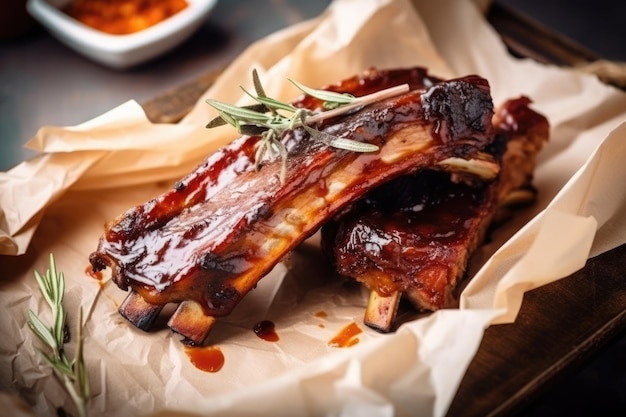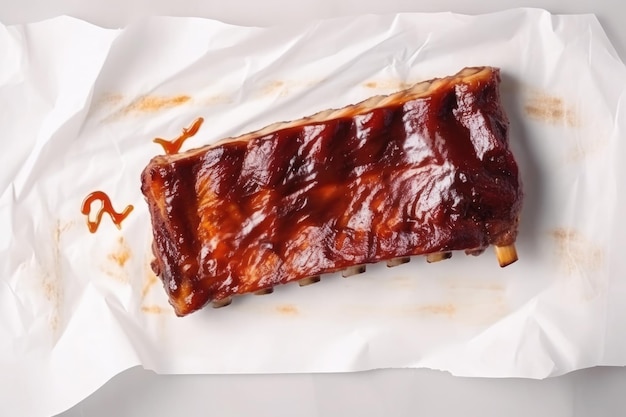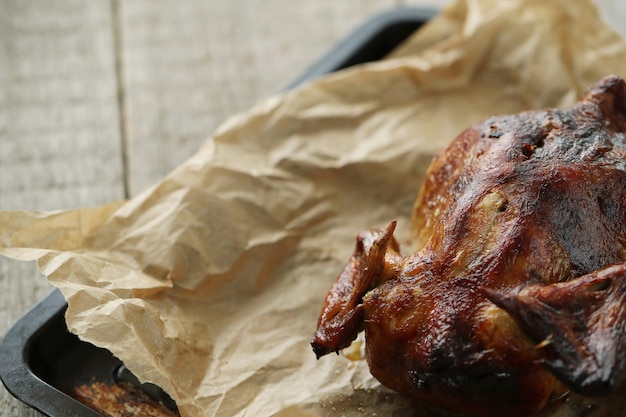There's a certain magic to a perfectly cooked cross rib roast. It's the kind of dish that makes you feel like a culinary rockstar, especially when it's a special occasion. It's the kind of meal that makes everyone at the table swoon with delight. But let's be honest, tackling a cross rib roast can be a bit daunting. It's not your typical Sunday roast, and getting it right can feel like navigating a complex culinary maze. But fear not, my fellow food enthusiasts! I'm here to hold your hand (metaphorically, of course) and guide you through every step of this amazing journey, from choosing the perfect cut to crafting mouthwatering sauces. Grab a comfy seat, pour yourself a cuppa, and get ready to embark on a culinary adventure that will leave you feeling like a true roast master.
(Part 1) Unveiling the Majesty of the Cross Rib Roast

Let's get one thing straight: the cross rib roast is a beast of a cut. It's a hefty piece of meat, usually about 3-4 pounds, and it's a cut brimming with potential. We're talking about a symphony of flavours, textures, and cooking techniques just waiting to be unlocked. But before we dive into the cooking aspect, let's get to know the star of the show: the cross rib itself.
Understanding the Cut
The cross rib roast, also known as the "rib roast" or "prime rib," is a cross-section of the rib cage, often featuring a few rib bones. It's typically taken from the seventh to the twelfth ribs of a beef carcass. This specific cut is known for its rich, marbled flavour, ensuring a tender and juicy final product. The fat marbling acts as a natural insulator, ensuring even cooking and keeping the meat moist. And the bone? That's where the flavour magic happens. As the meat cooks, the bone releases flavour compounds, enhancing the overall taste of the roast. Plus, let's face it, a bone-in roast just looks and feels more impressive. It's like having a culinary trophy on your dinner table, isn't it?
The Allure of the Cross Rib
So, what makes the cross rib roast such a coveted cut? It's a combination of factors: the rich, marbled flavour, the tender texture, and the undeniable visual appeal. It's a cut that embodies indulgence, and it's guaranteed to impress your guests. Plus, it's a cut that's incredibly versatile. You can roast it whole, slice it into steaks, or even use the leftovers for other dishes. It's a true culinary chameleon!
(Part 2) Choosing the Perfect Cross Rib Roast

Now that we've established the awesomeness of the cross rib roast, let's talk about the crucial first step: selecting the right cut. Choosing the perfect cross rib is like finding the perfect match for your culinary adventure. You want a cut that's not only delicious but also fits your cooking style and preferences.
The Grade Game
When you're at the butcher's, you'll see various grades of beef, and you'll want to look for a prime or choice grade for your cross rib roast. These grades indicate the amount of marbling, which translates to a more tender and flavorful roast. Trust me, the extra bit of fat is totally worth it! It's the fat that gives the roast its rich flavour and succulent texture. If you're on a budget, select grade select, it'll still be tasty and juicy.
Size Matters
Think about the number of guests you'll be serving and choose a cross rib accordingly. Remember, a general rule of thumb is to allow about 1 pound of cross rib per person. If you're hosting a large gathering, opt for a larger cut. But if it's just you and a few friends, a smaller roast will do the trick. You don't want to be stuck with a mountain of leftover roast, do you?
Looking for the Perfect Cut
Now, let's talk about the cut itself. Aim for a roast that's well-marbled, with a good amount of fat distributed evenly throughout the meat. This marbling is crucial for tenderness and flavour. You want to see a beautiful, even distribution of fat throughout the meat. Also, check for any blemishes or discoloration. You want a roast that's bright red and looks fresh. If the meat feels slimy or has a strong odour, it's best to skip it. You want the best for your culinary masterpiece, right?
(Part 3) Prepping Your Cross Rib Roast for Culinary Glory

So, you've got your perfect cross rib roast in hand, and the anticipation is building. Now, it's time to get down to business and prepare it for its starring role in your kitchen.
Seasoning with Savvy
The key to a flavorful cross rib roast is all about seasoning. I'm a firm believer in keeping things simple, but don't be afraid to experiment! A classic combination of salt and pepper will always do the trick, but if you're feeling adventurous, try adding some herbs like rosemary, thyme, or garlic. You can also use a pre-mixed rub or create your own blend to add complexity to the flavour profile. But remember, less is more. Too much seasoning can mask the natural flavour of the meat.
The Art of Roasting
Now, it's time to get your roast ready for its time in the oven. I'm a big fan of the "dry-brine" method. Basically, you rub the roast with a generous amount of salt and leave it uncovered in the refrigerator for a few hours. This helps the salt draw out moisture, then reabsorb it, resulting in a more tender and flavorful roast. You can also opt for a wet brine, which involves submerging the roast in a solution of salt and water, for a similar effect. Just remember to pat the roast dry before roasting.
(Part 4) Mastering the Roast: A Culinary Symphony
Finally, the moment of truth! You're about to unleash the full potential of your cross rib roast, turning it into a culinary masterpiece. This is where patience and precision come into play.
Low and Slow: The Key to Success
The key to a perfectly cooked cross rib roast is low and slow roasting. You want to cook it at a temperature low enough to render the fat and keep the meat moist. Ideally, aim for a temperature between 300°F and 325°F (150°C - 160°C). The exact time will depend on the size of your roast, but expect to roast it for at least 2-3 hours. This slow and gentle cooking process allows the fat to melt and baste the meat, creating a succulent and flavourful result.
The meat thermometer: Your Culinary Compass
To ensure your cross rib roast is cooked to perfection, invest in a good quality meat thermometer. It's your best friend in the kitchen, guiding you towards that coveted level of doneness. For medium-rare, aim for an internal temperature of 135°F (57°C), and for medium, aim for 145°F (63°C). Once the roast reaches your desired temperature, remove it from the oven and let it rest for at least 15 minutes before carving. This resting period allows the juices to redistribute throughout the meat, resulting in a more tender and flavorful roast.
(Part 5) Elevating the Feast: Sauces and Accompaniments
Now that your cross rib roast is a culinary triumph, it's time to elevate the experience with mouthwatering sauces and delightful accompaniments.
Pan Sauce: A culinary gem
While the roast is resting, you can use the delicious juices left in the roasting pan to create a simple yet flavorful pan sauce. Just deglaze the pan with a splash of wine or stock, scraping up any browned bits, and simmer until it reduces to a syrupy consistency. You can also add herbs, garlic, or other flavourings to create a personalised sauce. This pan sauce is a perfect complement to the roast, adding an extra layer of flavour and richness.
Accompaniments: The Perfect Pairings
No cross rib roast is complete without the perfect accompaniments. Think classic pairings like roasted potatoes, asparagus, Brussels sprouts, and Yorkshire pudding. You can also go for a more creative approach with dishes like roasted root vegetables, creamy polenta, or a vibrant salad. The possibilities are endless, so let your culinary imagination run wild.
(Part 6) Carving with Confidence: The Final Touch
The moment has arrived! Your cross rib roast has rested, the sauce is simmering, and the accompaniments are ready. It's time to carve and enjoy the fruits of your culinary labour.
Carving with Care
Carving a cross rib roast can seem intimidating, but it's actually quite simple. Start by slicing the meat against the grain, which means cutting across the muscle fibres. This ensures that the meat is tender and easy to chew. Use a sharp carving knife and carefully slice the meat into thin, even pieces. Don't be afraid to leave the bones in; they add a rustic touch and are great for dipping in the sauce.
Serving with Style
Once the roast is carved, arrange it on a platter and surround it with your chosen accompaniments. Drizzle the pan sauce generously over the roast and serve immediately. For a truly impressive presentation, you can carve the roast tableside and let your guests marvel at the culinary spectacle.
(Part 7) Mastering the Leftovers: Turning Triumph into Treasures
Let's be honest, a cross rib roast is so delicious, you're bound to have leftovers. But don't be disheartened! Leftover cross rib roast is a gift that keeps on giving, providing a wealth of culinary possibilities.
Delicious Leftover Reincarnations
The possibilities are endless! Slice the leftover roast and create sandwiches, salads, or even a hearty soup. You can also shred the meat and use it in tacos, burritos, or even a delicious shepherd's pie. And don't forget about the bones! They can be used to make a flavorful stock that can be used in soups, stews, or sauces.
(Part 8) FAQs: Unraveling the Mysteries of the Cross Rib Roast
Let's clear up some common questions about the cross rib roast.
FAQs:
- Can I freeze a cross rib roast? Yes, you can freeze a cross rib roast. Just wrap it tightly in plastic wrap and then aluminum foil, and store it in the freezer for up to 3 months. Be sure to thaw it slowly in the refrigerator before roasting. This allows the meat to thaw evenly, preventing ice crystals from forming that can affect the texture.
- What if my cross rib roast is overcooked? If you accidentally overcook your cross rib roast, don't despair. It's still edible, just a bit less tender. Try slicing it thin and using it in sandwiches or salads. You can also use the meat for tacos or other dishes where a slightly tougher texture isn't a problem.
- What's the best way to cook a cross rib roast without an oven? You can cook a cross rib roast in a slow cooker or on the grill. For the slow cooker, sear the roast first, then transfer it to the slow cooker and cook on low for 6-8 hours. For the grill, cook the roast over indirect heat for 2-3 hours, flipping it occasionally. These methods allow you to achieve that melt-in-your-mouth tenderness without using an oven.
- How do I tell if a cross rib roast is done? You can use a meat thermometer to check the internal temperature. For medium-rare, aim for 135°F (57°C), and for medium, aim for 145°F (63°C). You can also check for doneness by pressing the meat. If it's firm to the touch, it's likely done. However, the meat thermometer is the most reliable method for ensuring accurate doneness.
- What are some tips for carving a cross rib roast? Use a sharp carving knife and slice the meat against the grain. If the roast is still hot, let it rest for 10-15 minutes before carving to allow the juices to redistribute. This resting period allows the juices to redistribute throughout the meat, resulting in a more tender and flavorful roast.
There you have it, my friends! The ultimate guide to conquering the cross rib roast, from selecting the perfect cut to creating a culinary masterpiece. With a little practice, you'll be whipping up this delectable dish like a seasoned pro. So, gather your ingredients, embrace the culinary adventure, and let the aroma of a perfectly roasted cross rib fill your home with the promise of a truly special meal. Bon appétit!
Everyone is watching

Corn on the Cob: The Ultimate Guide to Perfectly Cooked Ears
Healthy MealsAh, corn on the cob. Just the name evokes images of sunny days, barbecues, and that sweet, juicy flavour that ...

Scallops: The Ultimate Guide to Perfect Cooking
Healthy MealsAh, scallops. Those delicate, sweet, and utterly delicious morsels of the sea. They hold a special place in my...

Spaghetti Squash: The Ultimate Guide to Cooking and Serving
Healthy MealsRemember that time you saw spaghetti squash at the supermarket, looking all bumpy and strange, and thought, "W...

Salmon Cooking Times: Perfect Guide for Every Recipe
Healthy MealsLet me tell you, cooking salmon is an art form. It's all about getting that perfect balance: juicy and tender,...

Ham Cooking Time: How Long to Bake, Smoke, or Boil a Delicious Ham
Healthy MealsAh, ham. It's a classic, isn't it? A real crowd-pleaser, especially around holidays. And when done right, it'...
